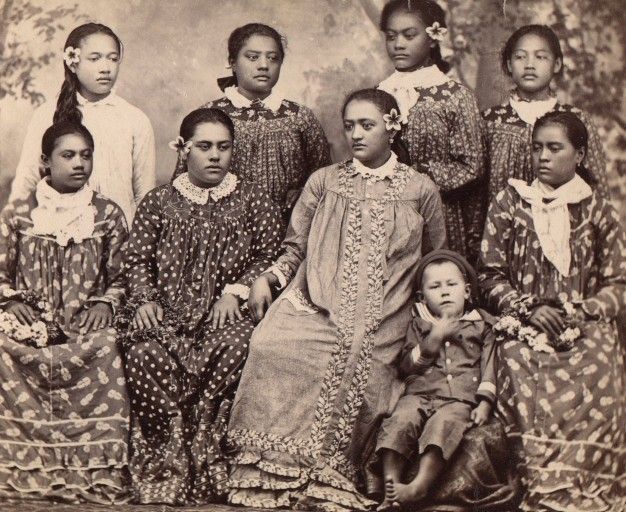

Kaetaeta Watson (left) and Louisa Humphry, MNZM.
Photo/Sonya Nagels and New Zealand Maritime Museum
How Kiribati turned missionary modesty into a fashion staple
Porirua is showcasing Tibuta, a type of blouse introduced by missionaries which has become widely accepted by the local culture.



Bad habits, burnout, and toxic people: What people are leaving behind before 2026


Pacific Cuisine: PMN’s top island dish of 2025



Bad habits, burnout, and toxic people: What people are leaving behind before 2026


Pacific Cuisine: PMN’s top island dish of 2025
Porirua's Pataka Museum is hosting an exhibition that showcases the Kiribati Tibuta, which is a blouse missionaries introduced to cover the chests of women.
Tibuta - Kinaakiia Ainen Kiribati/Identifies Kiribati Women honours the significance of Kiribati’s national tops, worn by women as markers of identity and pride.
Around 80 tibuta are currently on show, master artist Louisa Humphrey says they portray the garment’s evolution since it was introduced.
“Just plain colours, no embroidery, and it was very much homewear, but it has become very fashionable with the arrival of more varieties of material, more bright colours with more elaborate smocking and crotchet decorations on it.”
Each tibuta carries the legacy of grandmothers, mothers, daughters and granddaughters. They come with narratives around making practices, distinctive styles, gifting and wearing of tibuta for milestones such as family reunions, village gatherings and engagements.
In the Pacific, variations of the "mother hubbard" dress were introduced to “civilise” indigenous peoples. In Vanuatu and Hawai’i you will find muumuu, in Papua New Guinea, meri blaus, or the ‘ahu māmā rū’au, or grandmother’s dress.

Tahitian girls in their "grandmother's dresses" between 1880 and 1889. Photo/French National Library public domain
In Kiribati, Humphrey says the tibuta has become acceptable wear for formal occasions.
“Part of the office wear, the first lady in Kiribati wears it on official functions.”
This exhibition is in response to a lack of resources and global information on tibuta directly from the I-Kiribati diaspora.
Tibuta - Kinaakiia Ainen Kiribati runs until Saturday 11 November 2023